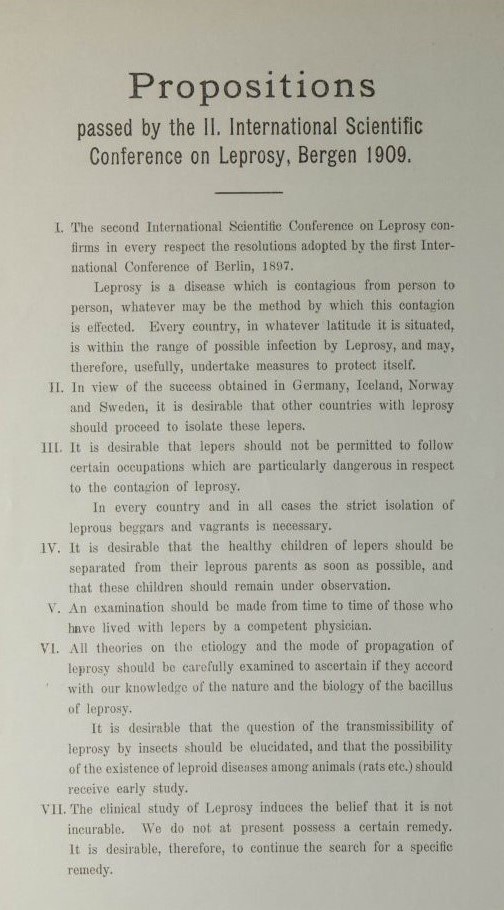Norwegian leprosy legislation – a model worth following?
The Norwegian legislations garnered world-wide interest and to some extent inspired much stricter legislation in other countries. Debates and resolutions at the International Leprosy Conference in Berlin in 1897 and Bergen in 1909 led to an agreement to recommend compulsory registration, monitoring and isolation of those affected by leprosy. Without effective treatment, it was imperative to prevent the disease from spreading. The Norwegian model of institution building and having specific legislation that allowed people to be isolated became a benchmark. Hansen thus became the inspiration for the unified isolation policy the world over, where in many places, the measures taken were much stricter than in Norway.
In fact, the institution-building and isolation that had been practised at Pleiestiftelsen were recommended in other parts of the world as early as 1873. Henry Vandyke Carter, a sanitation officer in the Indian army, came to Bergen from India on assignment from the British government. He was to study which measures against the disease were most effective, and in his subsequent report he recommended annual ‘leprosy counts’ as part of the effort to control the disease. He also included photographs and blueprints of Pleiestiftelsen in Bergen, highlighting it as a model for a well-functioning isolation facility.
We now know that infection in itself is not enough to develop leprosy. Genetic factors also play a part, and good nutrition and a strong immune system are important factors that prevent the disease becoming active. In other words, the standard of living significantly affects the spread of leprosy. At the end of the 19th century, however, isolation was cited to as the sole reason for the decline in leprosy cases in Norway.
It was not until well into the 20th century that Chief Medical Officer H. P. Lie included rising living standards as part of the reason for the rapid decline of the disease in the decades after 1850. He attached far less importance to the isolation of infectious cases than Hansen and many others, and pointed out that only a small fraction of those with leprosy were in isolation when the rate started to decrease. According to Lie, the most significant reason for the decline of the disease was satisfactory economic and cultural development in general, and not least advancements in hygiene.



The Regional State Archives of Bergen.

The Regional State Archives of Bergen.

The Regional State Archives of Bergen.



